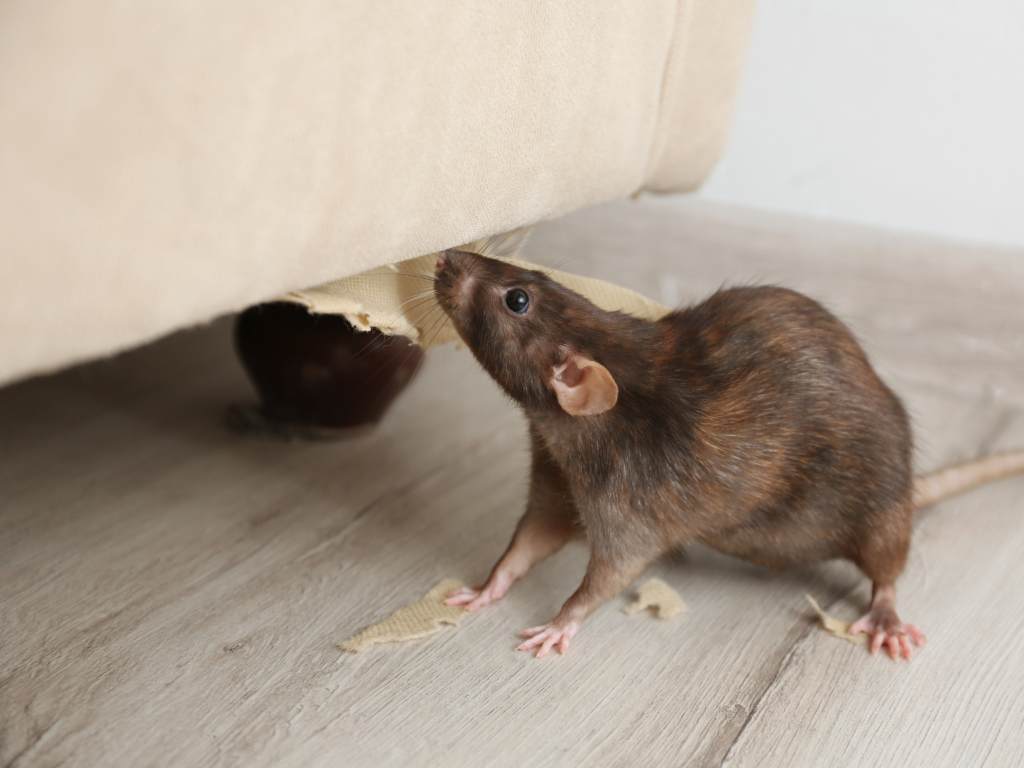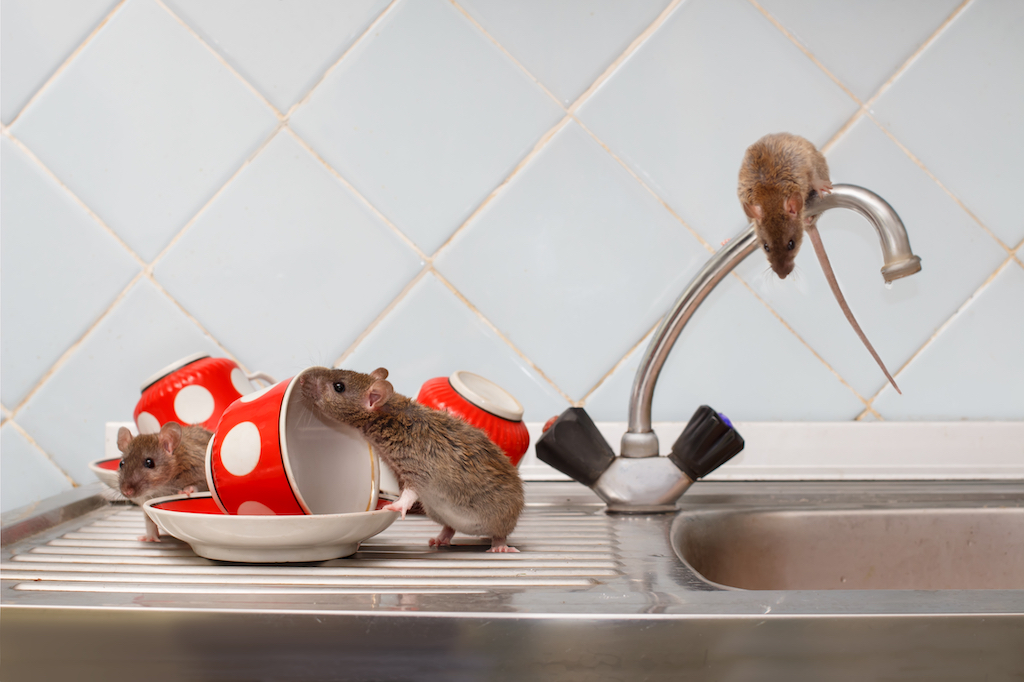Florida’s subtropical climate characterized by mild winters, plenty of humidity, and consistent warmth provides mice and rats with opportunities to remain active and multiply all year long. In Pompano Beach, a dynamic coastal city in South Florida, these rodents can slip into single-family homes, rental properties, or commercial spaces if stray crumbs, unsealed gaps, or small leaks grant them food or water. Once inside, rodents generally nest behind walls, in attics, or beneath appliances, quietly chewing wiring or exploring for easy meals. This page explores why rodents flourish in Florida, how to detect an infestation, and why relying on a professional exterminator for rodent treatments is critical to safeguarding occupant health and property security.
Whether you manage a home in Pompano Beach or operate short-term rentals, recognizing rodent signs quickly and implementing targeted, multi-step solutions protects occupants from droppings-borne hazards, wiring or wooden damage, and repeated do-it-yourself efforts that often miss concealed pups or newly arrived rodents exploiting Florida’s gentle cold season for endless breeding.
Why Rodents Flourish in Florida
Mild Winter Temperatures
In many colder regions, frigid winter months suppress mouse or rat reproduction for an extended period. Florida’s gentle cold season, however, seldom dips near freezing, letting rodents feed and breed indoors or outdoors year-round. Climate-controlled structures (about 65–85°F) eliminate seasonal slowdowns, enabling mice and rats to reproduce unabated unless occupant or manager measures intervene.
Consistent Food & Moisture
Rodents eat almost any organic material unsealed trash, leftover food, or pet kibble. In busy Pompano Beach households or commercial sites, occupant lifestyles may inadvertently supply continuous scraps if cleaning or disposal lapses. Even small water leaks under sinks or air conditioner lines provide enough moisture in Florida’s humidity to sustain mice and rats.
Rapid Breeding Cycles
A single female mouse or rat can produce multiple litters yearly, each containing several pups that grow into reproducing adults within weeks. Missing initial droppings or chew marks readily leads to widespread colonies in wall voids, attic corners, or basement spaces if occupant or professional detection doesn’t come soon enough.
Easy Entry Points
Mice squeeze through dime-sized foundation cracks or door sweeps, while rats need quarter-sized gaps around utility lines or vents. In older properties or newer constructions lacking thorough sealing, rodents settle behind drywall or under floors, often going unnoticed until occupant clues like nighttime scuttling or droppings emerge.
Movement of Goods & People
Florida’s relocations, tourism, and occupant turnover constantly shuffle boxes, furniture, or personal items potential rodent transport from property to property. In multi-unit buildings, occupant or manager oversight may enable mice or rats to move between units if occupant synergy or housekeeping remains inadequate.

Warning Signs of a Rodent Infestation
- Droppings
- Small, pellet-shaped (¼ inch long) with pointed ends near baseboards, under sinks, or behind appliances.
- Fresh droppings are dark and soft; older droppings turn grayish and crumble when pressed.
- Small, pellet-shaped (¼ inch long) with pointed ends near baseboards, under sinks, or behind appliances.
- Chewed Packaging & Gnawing
- Rodents nibble cardboard, plastic, or wood to keep incisors from overgrowing.
- Torn corners on pantry goods or visible teeth marks confirm rodent feeding attempts.
- Rodents nibble cardboard, plastic, or wood to keep incisors from overgrowing.
- Nocturnal Scratching or Squeaking
- Mice and rats forage at night, producing subtle rustling or squeaks in walls, ceilings, or under floors.
- Frequent noises likely indicate an entrenched colony.
- Mice and rats forage at night, producing subtle rustling or squeaks in walls, ceilings, or under floors.
- Shredded Nest Material
- Bits of paper, fabric, or insulation bunched up in attic spaces, behind appliances, or basements.
- Droppings or stale odors near these nests validate active rodent presence.
- Bits of paper, fabric, or insulation bunched up in attic spaces, behind appliances, or basements.
- Pet Fixation
- Cats or dogs staring at walls, pawing beneath stoves, or growling at vacant corners often detect rodent activity occupant hearing can’t.
- Sudden pet obsession with a previously ignored spot usually implies hidden mice or rats.
- Cats or dogs staring at walls, pawing beneath stoves, or growling at vacant corners often detect rodent activity occupant hearing can’t.
- Musty or Ammonia-Like Smell
- Accumulated droppings or urine create a strong, foul odor in enclosed nooks.
- Intense odors often point to bigger or older rodent colonies.
- Accumulated droppings or urine create a strong, foul odor in enclosed nooks.
Why Overlooking Rodents Is Risky
Health Dangers
Rodents carry bacteria (like salmonella) in droppings or saliva, contaminating stored foods, counters, or utensils. Inhaling dried feces dust jeopardizes occupant respiratory health especially if occupant or staff cleaning is sporadic.
Structural & Electrical Complications
Mice and rats gnaw wood framing, insulation, or wiring insulation behind walls. Frayed wiring risks electrical shorts or fires, forcing occupant relocation or steep repairs.
Unbridled Reproduction
Florida’s mild winter fosters ongoing rodent breeding. A small infiltration easily escalates to numerous nests behind walls or multiple floors if occupant or manager detection is late, heightening occupant anxiety and repair demands.
Secondary Pest Issues
Rodent nests occasionally harbor fleas or ticks, sparking further occupant or pet troubles if these parasites migrate. Larger predators may be drawn to rodent-rich properties, adding occupant or manager complexities.
Occupant Stress & Brand Fallout
For short-term rentals or property managers in Pompano Beach, occupant sightings of rodents lead to occupant complaints or negative reviews unless solved quickly. Homeowners likewise face occupant worry or repeated cleansing chores if rodents reappear after partial occupant attempts.

Why a Professional Exterminator for Rodent Treatments Is Key
Detailed Property Reviews
A rodent exterminator inspects attics, behind appliances, crawl spaces, or basements for droppings, nest fragments, or gnaw signs. Determining if you’re dealing with mice or rats clarifies which traps snap traps, bait stations or specialized methods fit best.
Strategic Baiting & Trapping
Experts place snap traps or tamper-resistant bait stations along rodent runways (wall edges, under cabinets) for efficient captures. Random occupant usage of poisons or misaligned traps yields limited results or occupant hazards if incorrectly deployed.
Safe & Regulated Rodenticides
Misapplied poisons harm occupant pets or children. Exterminators secure these toxins in locked bait stations, ensuring lethal doses for rodents alone. Mice typically die in hidden nest zones or outside, trimming occupant disposal tasks. This outperforms occupant do-it-yourself tries that risk occupant or pet safety.
Exclusion & Repairs
Removing current rodents tackles only half the problem. Exterminators coach occupant or staff on sealing foundation cracks, fixing door sweeps, or filling utility line holes barriers denying fresh rodent infiltration. Occupant synergy cements rodent freedom under Florida’s rodent-friendly mild winter.
Scheduled Re-Checks
Rodent pups might appear weeks after occupant sightings abate, or new mice may exploit previously missed gaps. Many exterminators re-check occupant calls or perform follow-up visits if droppings or sightings return, adjusting occupant housekeeping or re-placing baits until occupant certainty that no hidden rodents remain.
Typical Methods for Rodent Treatments
- Inspection & Scope of Infestation
- Technicians survey attics, behind appliances, or basement corners for droppings, nesting debris, or gnawed wires.
- Determining whether rodents occupy the kitchen alone or multiple floors clarifies partial vs. entire-property coverage occupant demands.
- Technicians survey attics, behind appliances, or basement corners for droppings, nesting debris, or gnawed wires.
- Trapping (Snap or Live)
- Snap traps quickly decrease adult mice if placed properly along wall edges.
- Live traps might be used if the occupant requests minimal kills, though less practical for heavier infestations.
- Snap traps quickly decrease adult mice if placed properly along wall edges.
- Bait Stations
- Tamper-resistant enclosures holding rodenticides keep occupant pets or children safe from open poisons.
- Mice ingest lethal doses, generally dying in concealed nest areas or outdoors, reducing occupant disposal issues.
- Tamper-resistant enclosures holding rodenticides keep occupant pets or children safe from open poisons.
- Exclusion & Structural Sealing
- Occupants or professionals patch foundation holes, fill utility line gaps, or fix door sweeps with steel wool or mesh.
- Eliminating re-entry points cements rodent prevention once occupant synergy plus extermination clear current nests.
- Occupants or professionals patch foundation holes, fill utility line gaps, or fix door sweeps with steel wool or mesh.
- Sanitation & Decluttering
- Occupants remove leftover scraps daily, seal leftover foods in plastic or metal bins, or regularly wipe counters.
- Reducing cardboard boxes or random storage eliminates nest corners behind stacked items.
- Occupants remove leftover scraps daily, seal leftover foods in plastic or metal bins, or regularly wipe counters.
- Droppings & Odor Cleanup
- Clearing droppings or sanitizing nest spots removes pheromone trails attracting new rodents.
- Occupants or specialized cleaners handle droppings carefully, protecting occupant respiration from dust-laden feces.
- Clearing droppings or sanitizing nest spots removes pheromone trails attracting new rodents.
- Maintenance & Re-Check
- Weeks after the occupant sees improvement, occupant sightings or droppings might confirm leftover pups or newly arrived mice.
- Additional occupant housekeeping or re-placing baits ensures occupant comfort that no rodent pockets remain undiscovered.
- Weeks after the occupant sees improvement, occupant sightings or droppings might confirm leftover pups or newly arrived mice.
- Inspection & Scope of Infestation

Service Area: Pompano Beach
Rodents adapt strongly to Florida’s mild winter environment, so occupant synergy plus specialized mice and mouse treatments remain vital in Pompano Beach to exterminate or deter widespread infestations. Florida’s gentle cold season barely restricts rodent breeding, requiring occupant or manager vigilance plus professional extermination to keep them from endangering occupant health or property stability.
Why Choose Us
Florida-Oriented Strategies
We unify recognized rodent solutions: snap traps, bait stations, thorough sealing alongside occupant housekeeping, tailored to Florida’s climate. By combining occupant synergy like discarding leftover scraps or controlling moisture and advanced extermination, adult mice and their litters are eliminated, exceeding occupant attempts that neglect hidden nesting or newly introduced rodents.
Thorough Surveying
Before setting traps or placing bait, technicians thoroughly examine attics, behind appliances, or crawl spaces for droppings, shredded nest items, or gnaw marks. Confirming rodent presence mice vs. rats and how widespread clarifies the coverage occupant or manager needs.
Safe & Targeted Rodenticide Use
Exterminators place rodenticides strictly inside tamper-resistant stations, protecting occupant pets and children. Snap traps or mechanical traps along known rodent routes yield swift kills. This approach guards occupant or pet health but decisively removes rodent colonies.
Sealing & Sanitation Guidance
Removing existing rodents addresses only half the scenario. Occupants or professionals must seal cracks, fix door sweeps, and fill utility openings so new rodents can’t infiltrate. Occupant synergy like daily trash disposal bolsters rodent prevention in Florida’s mild-winter conditions.
Follow-Up & Lasting Assurance
Leftover rodent pups may emerge weeks post occupant sightings vanish, or newly arrived mice might exploit missed gaps. Many exterminators re-check occupant calls if droppings reappear, readjusting occupant housekeeping or re-placing baits until occupant confidence no rodent nests lurk unseen.
Next Steps
Seeing droppings by baseboards, hearing rustling in walls at night, or discovering chew marks on food packages? Contact us to learn more or schedule your service. Our rodent treatments for Pompano Beach unify comprehensive property checks, suitably placed traps or bait stations, occupant-led sealing and sanitation efforts, plus follow-up visits thoroughly eradicating rodent nests while preventing future ones.
Act fast to protect occupant health from droppings-borne bacteria, guard wiring or wood from gnawing, and maintain occupant trust if you operate short-term rentals or multi-unit residences. Rely on our Florida-based exterminator proficiency in mice and mouse solutions to detect, eliminate, and deter rodents effectively overriding their mild winter breeding edge so occupant comfort and property safety last year-round.
